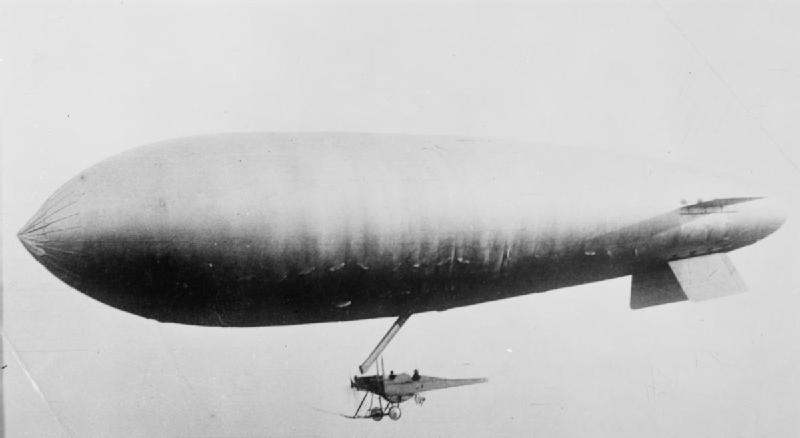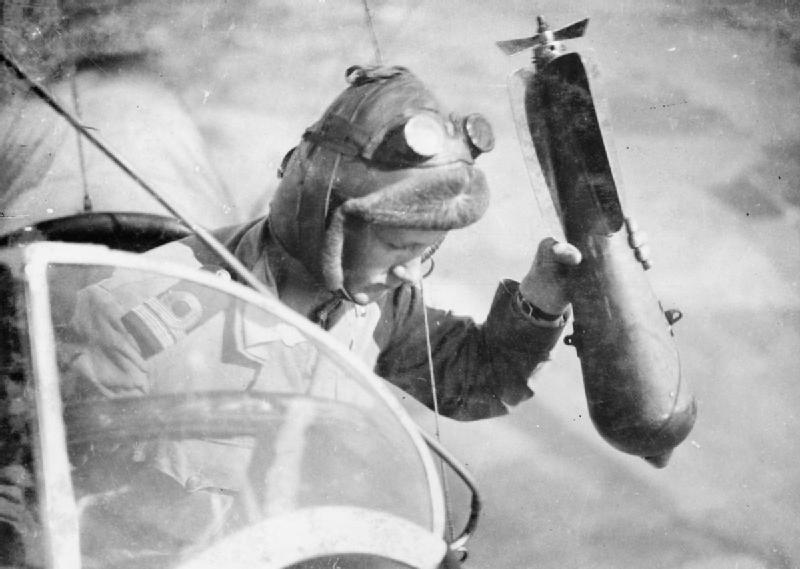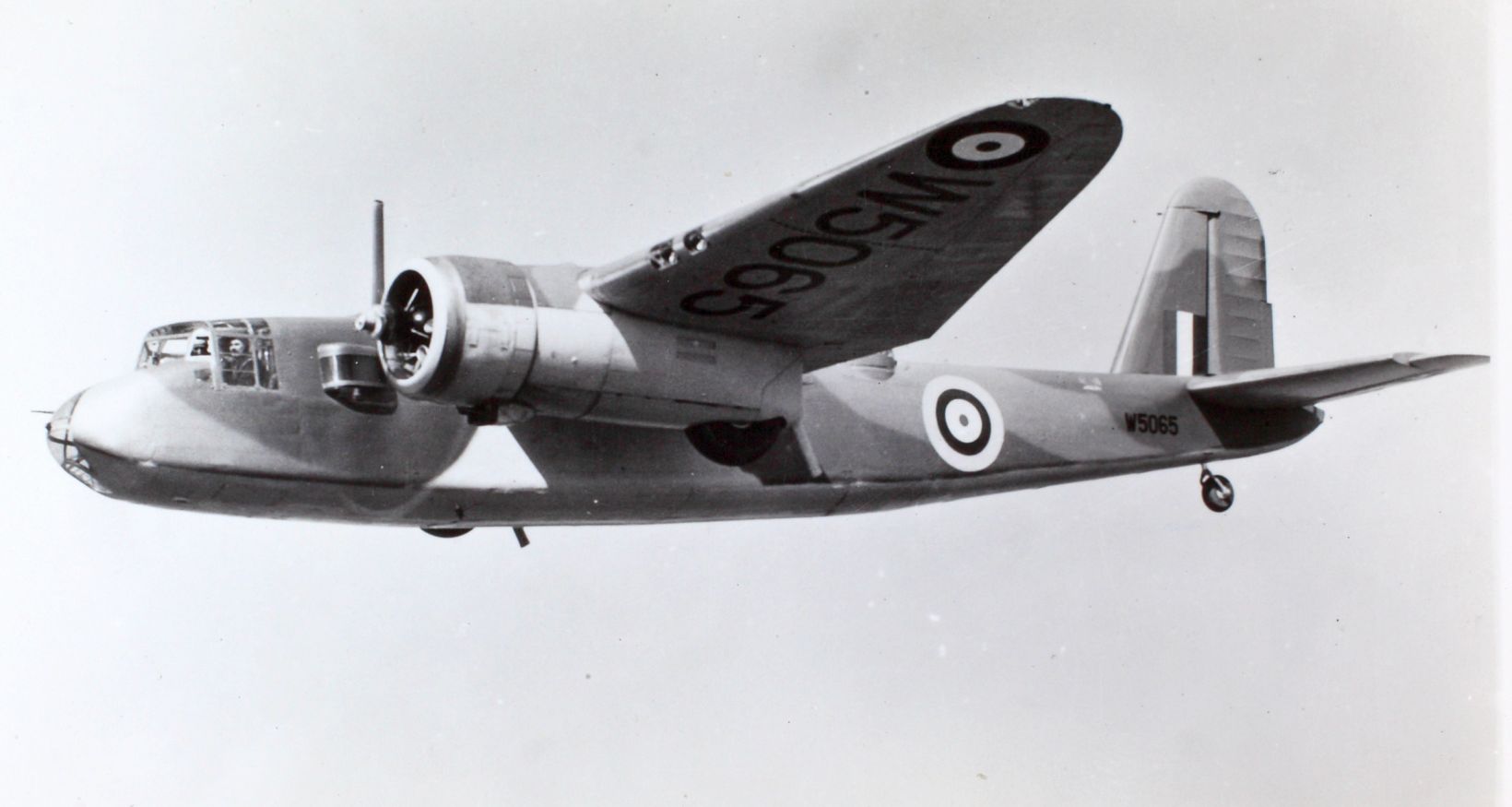RAF Mona on:
[Wikipedia]
[Google]
[Amazon]
RAF Mona is a
 This location was first used for aviation during the
This location was first used for aviation during the  In June 1917 three SSP class airships, SSP1, SSP5 and SSP6, replaced two of the original SS class airships, the other two old airships continued in use. The airships were later replaced by eight SSZ class airships, which had greater speed, endurance and bomb load.
The airships communicated by radio with a relay station at
In June 1917 three SSP class airships, SSP1, SSP5 and SSP6, replaced two of the original SS class airships, the other two old airships continued in use. The airships were later replaced by eight SSZ class airships, which had greater speed, endurance and bomb load.
The airships communicated by radio with a relay station at

 In 1941 the site was requisitioned for use as an airfield, and the hospital was transferred to
In 1941 the site was requisitioned for use as an airfield, and the hospital was transferred to
Mona Flying Club
UK Military Aeronautical Information Publication – Mona (EGOQ)
{{DEFAULTSORT:Mona Buildings and structures in Anglesey Royal Air Force stations in Wales Royal Air Force stations of World War II in the United Kingdom Royal Naval Air Stations in Wales
Royal Air Force
The Royal Air Force (RAF) is the United Kingdom's air and space force. It was formed towards the end of the First World War on 1 April 1918, becoming the first independent air force in the world, by regrouping the Royal Flying Corps (RFC) an ...
station near Bodffordd on the island of Anglesey
Anglesey (; cy, (Ynys) Môn ) is an island off the north-west coast of Wales. It forms a principal area known as the Isle of Anglesey, that includes Holy Island across the narrow Cymyran Strait and some islets and skerries. Anglesey island ...
, Wales
Wales ( cy, Cymru ) is a country that is part of the United Kingdom. It is bordered by England to the east, the Irish Sea to the north and west, the Celtic Sea to the south west and the Bristol Channel to the south. It had a population in ...
. It is primarily used as a relief landing ground for RAF Valley
Royal Air Force Valley or more simply RAF Valley ( cy, Llu Awyr Brenhinol Y Fali) is a Royal Air Force station on the island of Anglesey, Wales, and which is also used as Anglesey Airport. It provides both basic and advanced fast-jet training ...
.
RAF Mona is also the home of Mona Flying Club who operate some evenings and most weekends.
History
First World War
 This location was first used for aviation during the
This location was first used for aviation during the First World War
World War I (28 July 1914 11 November 1918), often abbreviated as WWI, was one of the deadliest global conflicts in history. Belligerents included much of Europe, the Russian Empire, the United States, and the Ottoman Empire, with fightin ...
when the Royal Naval Air Service opened an airship
An airship or dirigible balloon is a type of aerostat or lighter-than-air aircraft that can navigate through the air under its own power. Aerostats gain their lift from a lifting gas that is less dense than the surrounding air.
In early ...
base here named Royal Naval Air Station (RNAS) Anglesey (also known as RNAS Bodffordd, RNAS Gwalchmai and RNAS Llangefni).
RNAS Anglesey was commissioned on 26 September 1915, when it was operated by 14 Group RNAS, operating SS18, an SS class airship
SS (''Submarine Scout'' or ''Sea Scout'') class airships were simple, cheap and easily assembled small non-rigid airships or "blimps" that were developed as a matter of some urgency to counter the German U-boat threat to British shipping during ...
, which was later joined by airships SS22, SS24 and SS25. The station had in a large airship hangar
Airship hangars (also known as airship sheds) are large specialized buildings that are used for sheltering airships during construction, maintenance and storage. Rigid airships always needed to be based in airship hangars because weathering was a ...
, long, workshops, hydrogen gas production sheds and accommodation huts. The airships, which could drop bombs, escorted ships and patrolled for enemy submarines in the central section of the Irish Sea
The Irish Sea or , gv, Y Keayn Yernagh, sco, Erse Sie, gd, Muir Èireann , Ulster-Scots: ''Airish Sea'', cy, Môr Iwerddon . is an extensive body of water that separates the islands of Ireland and Great Britain. It is linked to the Ce ...
between Bardsey Island
Bardsey Island ( cy, Ynys Enlli), known as the legendary "Island of 20,000 Saints", is located off the Llŷn Peninsula in the Welsh county of Gwynedd. The Welsh name means "The Island in the Currents", while its English name refers to the "Islan ...
, Dublin, the Isle of Man
)
, anthem = "O Land of Our Birth"
, image = Isle of Man by Sentinel-2.jpg
, image_map = Europe-Isle_of_Man.svg
, mapsize =
, map_alt = Location of the Isle of Man in Europe
, map_caption = Location of the Isle of Man (green)
in Europe ...
and Morecambe Bay
Morecambe Bay is a large estuary in northwest England, just to the south of the Lake District National Park. It is the largest expanse of intertidal mudflats and sand in the United Kingdom, covering a total area of . In 1974, the second larges ...
. This area includes the approaches to the Port of Liverpool
The Port of Liverpool is the enclosed dock system that runs from Brunswick Dock in Liverpool to Seaforth Dock, Seaforth, on the east side of the River Mersey and the Birkenhead Docks between Birkenhead and Wallasey on the west side of t ...
, then one of the busiest ports in the world.
 In June 1917 three SSP class airships, SSP1, SSP5 and SSP6, replaced two of the original SS class airships, the other two old airships continued in use. The airships were later replaced by eight SSZ class airships, which had greater speed, endurance and bomb load.
The airships communicated by radio with a relay station at
In June 1917 three SSP class airships, SSP1, SSP5 and SSP6, replaced two of the original SS class airships, the other two old airships continued in use. The airships were later replaced by eight SSZ class airships, which had greater speed, endurance and bomb load.
The airships communicated by radio with a relay station at Llaneilian
Llaneilian (; ) is a village and community in the Welsh county of Anglesey. It is located in the north east of the island, east of Amlwch, north west of Menai Bridge and north of Llangefni. The community includes the villages and hamlets of ...
on the north coast of Anglesey, whose operators contacted the airship station by telephone.
In November 1917 an unsuccessful attempt was made to base Airco DH.4
The Aircraft Manufacturing Company Limited (Airco) was an early British aircraft manufacturer. Established during 1912, it grew rapidly during the First World War, referring to itself as the largest aircraft company in the world by 1918.
Ai ...
light bomber biplanes at RNAS Anglesey. From August to November 1918, eight Airco DH.6 biplanes of No. 255 Squadron RAF were based at RNAS Anglesey, but the poorly-drained land caused difficulty, and the aircraft were transferred to the newly opened Bangor Aerodrome on the mainland.
In July 1918 a mooring-out site was established in the grounds of Malahide Castle, north of Dublin. There were plans to base airships at Malahide from 1919, but the plans were abandoned at the end of the war.
Experimental work conducted at RNAS Anglesey during the First World War included the use of hydrophones
A hydrophone ( grc, ὕδωρ + φωνή, , water + sound) is a microphone designed to be used underwater for recording or listening to underwater sound. Most hydrophones are based on a piezoelectric transducer that generates an electric potenti ...
suspended under airships to detect submarines, the use of phosphorus
Phosphorus is a chemical element with the symbol P and atomic number 15. Elemental phosphorus exists in two major forms, white phosphorus and red phosphorus, but because it is highly reactive, phosphorus is never found as a free element on Ear ...
to create smoke screen
A smoke screen is smoke released to mask the movement or location of military units such as infantry, tanks, aircraft, or ships.
Smoke screens are commonly deployed either by a canister (such as a grenade) or generated by a vehicle (such as ...
s at sea, and the use of hydrogen from the airship envelope to fuel the engine.
At the end of the First World War, Major Thomas Elmhirst, the commanding officer of the station, celebrated the armistice
An armistice is a formal agreement of warring parties to stop fighting. It is not necessarily the end of a war, as it may constitute only a cessation of hostilities while an attempt is made to negotiate a lasting peace. It is derived from the ...
by successfully piloting an SSZ airship under the Menai Suspension Bridge. The act did not harm Elmhirst's career, and he later became Air Marshal Sir Thomas Walker Elmhirst, a senior commander of the RAF.
In 1920 the site was bought by Anglesey County Council. The aircraft shed was demolished and some of the buildings were used as an isolation hospital.
Second World War

 In 1941 the site was requisitioned for use as an airfield, and the hospital was transferred to
In 1941 the site was requisitioned for use as an airfield, and the hospital was transferred to Llangefni
Llangefni (meaning "church on the River Cefni", ) is the county town of Anglesey in Wales and contains the principal offices of the Isle of Anglesey County Council. United Kingdom Census 2011 recorded Llangefni's population as 5,116 people, ma ...
. In 1942 three tee hangars and seventeen blister hangars were constructed, and concrete runways were laid in 1943. At this time the base was controlled by RAF Flying Training Command
Flying Training Command was an organization of the Royal Air Force; it controlled flight training units. The command's headquarters were at Shinfield Park, Reading in Berkshire.
History
Flying Training Command was formed from the elements of ...
. The RAF base was initially named RAF Heneglwys (a nearby hamlet) but was soon renamed RAF Mona (Latin for Anglesey).
The base was intended to be used by No. 6 Air Gunnery School (AGS), but this unit was not established and RAF Mona was instead used by 3 AGS, which transferred from RAF Castle Kennedy in south-west Scotland in December 1942. 3 AGS was initially equipped with 48 Blackburn Botha
The Blackburn B.26 Botha was a four-seat reconnaissance and torpedo bomber. It was produced by the British aviation company Blackburn Aircraft at its factories at Brough and Dumbarton.
The Botha was developed during the mid 1930s in response t ...
torpedo bombers, 6 Fairey Battle
The Fairey Battle is a British single-engine light bomber that was designed and manufactured by the Fairey Aviation Company. It was developed during the mid-1930s for the Royal Air Force (RAF) as a monoplane successor to the Hawker Hart and ...
light bombers and 8 Miles Martinet
The Miles M.25 Martinet was a target tug aircraft of the Royal Air Force (RAF) and Fleet Air Arm (FAA) that was in service during the Second World War. It was the first British aircraft to be designed specifically for target towing.
Work o ...
target tug aircraft. These were subsequently replaced by Avro Anson
The Avro Anson is a British twin-engined, multi-role aircraft built by the aircraft manufacturer Avro. Large numbers of the type served in a variety of roles for the Royal Air Force (RAF), Fleet Air Arm (FAA), Royal Canadian Air Force (RCA ...
multi-role aircraft. in October 1943, 3 AGS returned to RAF Castle Kennedy.
In spring 1943 RAF Mona was used by No. 5 (Pilots) Advanced Flying Unit to train Turkish officers, using Miles Master
The Miles M.9 Master was a British two-seat monoplane advanced trainer designed and built by aviation company Miles Aircraft Ltd. It was inducted in large numbers into both the Royal Air Force (RAF) and Fleet Air Arm (FAA) during the Second W ...
aircraft. From November 1943 until June 1945, No. 8 Observers Advanced Flying Unit were based at RAF Mona, equipped with Avro Anson
The Avro Anson is a British twin-engined, multi-role aircraft built by the aircraft manufacturer Avro. Large numbers of the type served in a variety of roles for the Royal Air Force (RAF), Fleet Air Arm (FAA), Royal Canadian Air Force (RCA ...
s. At the end of the Second World War, 1,378 officers and men of the RAF and 408 officers and women of the WAAF WAAF may refer to:
* w3af, (short for web application attack and audit framework), an open-source web application security scanner
* Women's Auxiliary Air Force, a British military service in World War II
** Waaf, a member of the service
* WAAF (AM ...
were based at RAF Mona. The airfield was placed on care and maintenance at the end of the war.
After 1945
RAF Mona reopened in 1951 as a relief landing ground for RAF Valley, then used by No. 202 Advanced Flying School operatingde Havilland Vampire
The de Havilland Vampire is a British jet fighter which was developed and manufactured by the de Havilland Aircraft Company. It was the second jet fighter to be operated by the RAF, after the Gloster Meteor, and the first to be powered by ...
jet fighters. RAF Mona still has this role.
Today, Mona is used for circuit practice by BAE Hawk
The BAE Systems Hawk is a British single-engine, jet-powered advanced trainer aircraft. It was first flown at Dunsfold, Surrey, in 1974 as the Hawker Siddeley Hawk, and subsequently produced by its successor companies, British Aerospace and B ...
s from RAF Valley along with a civilian flying club and 2474 (Cefni) Squadron Air Training Corps
The Air Training Corps (ATC) is a British volunteer-military youth organisation. They are sponsored by the Ministry of Defence and the Royal Air Force. The majority of staff are volunteers, and some are paid for full-time work – including C ...
.
RAF units
The following units were based at RAF Mona: * No. 3 Air Gunners School RAF * No. 4 Flying Training School RAF *No. 5 (Pilots) Advanced Flying Unit RAF
5 is a number, numeral, and glyph.
5, five or number 5 may also refer to:
* AD 5, the fifth year of the AD era
* 5 BC, the fifth year before the AD era
Literature
* 5 (visual novel), ''5'' (visual novel), a 2008 visual novel by Ram
* 5 (comic ...
* No. 7 Flying Training School RAF
No. 7 Flying Training School (7 FTS) is a former Royal Air Force flying training school that operated between 1935 and 1994.
From 1948 to 1954, No 7 Flying Training School was located at RAF Cottesmore, flying Tiger Moths, Harvards, Prentices an ...
* No. 8 (Observers) Advanced Flying Unit RAF
The numero sign or numero symbol, №, (also represented as Nº, No, No. or no.), is a Typography, typographic abbreviation of the word ''number''(''s'') indicating ordinal number, ordinal numeration, especially in names and titles. For exampl ...
* No. 63 Gliding School RAF
* No. 202 Advanced Flying School RAF
No. 7 Flying Training School (7 FTS) is a former Royal Air Force flying training school that operated between 1935 and 1994.
From 1948 to 1954, No 7 Flying Training School was located at RAF Cottesmore, flying Tiger Moths, Harvards, Prentices an ...
* No. 255 Squadron RAF
* No. 251 (Special Duty) Flight
* No. 522 (Special Duty) Flight
* No. 577 Squadron RAF
* No. 1606 (Anti-Aircraft Co-operation) Flight RAF
Accidents and incidents
A Hawk aircraft crashed at RAF Mona in 2007. The pilot ejected safely and made a full recovery. A Hawk aircraft overshot the runway on 13 September 2013. The aircraft was practising forced landings when it hit a goose while on the runway and ended up in the arresting safety net. Both instructor and pupil were unhurt. In June 2016 a man was convicted of endangering aircraft by shining a powerful torch at pilots undertaking night-time fast jet training at RAF Mona.See also
*List of Royal Air Force stations
The Royal Air Force (RAF) operates several stations throughout the United Kingdom and overseas. This includes front-line and training air bases, support, administrative and training stations with no flying activity, unmanned airfields used fo ...
* List of air stations of the Royal Navy
This is a list of naval air stations of the Royal Navy. Naval air stations are land bases of the Fleet Air Arm, the branch of the Royal Navy responsible for the operation of naval aircraft.
Current naval air stations
Currently RNAS means "R ...
References
Bibliography
*External links
Mona Flying Club
UK Military Aeronautical Information Publication – Mona (EGOQ)
{{DEFAULTSORT:Mona Buildings and structures in Anglesey Royal Air Force stations in Wales Royal Air Force stations of World War II in the United Kingdom Royal Naval Air Stations in Wales